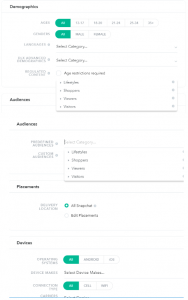Q4 is right around the corner, and that means digital marketers need to be on top of their game in planning, building, executing, and converting. But when you are looking to really scale revenue and new customers this holiday season, you’ll have to incorporate some branding strategies.
Now, I work for a performance digital marketing agency, so everything we do is always tied back to the question, ‘Well, is it improving performance?’ So when I say branding, I’m talking about the avenues that will allow you to get very targeted so that you can be sure you are hitting relevant audiences for your business. Better yet for performance marketers, there is a way where (to some extent) you can measure the effects these branding plays have on performance (I’ll get to that in a bit).
In this post, I’ll break down channels to test for branding, and then I’ll talk about how to measure the performance of those branding channels/campaigns. Let’s get started.
YouTube
This channel has huge reach, and it’s a great way to cast a wide net and get exposure for your brand. The biggest downside with YouTube is that, if you’re not careful, you can spend a lot of your budget ineffectively.
Here are a few targeting recommendations to effectively get in front of the right audiences and have a positive impact on performance:
- In-market audiences – With this targeting, Google identifies users who are actively shopping for certain categories. Additionally, if you know the demographics of your target audience, you can layer on gender and age targeting to get more selective about the folks who see your ad.
- Custom intent audiences – You can also take things one step beyond in-market audiences and develop your own custom intent audiences. With custom intent audiences, you enter a list of search terms that align with what your ideal audience uses to find your product/service. Google will then use that list to define and reach the ideal audience for your business; this lets you go beyond Google’s predefined audience segments and reach people as they’re making a purchase decision.
Instagram stories
What makes Instagram’s stories feature so great is that it takes advantage of all of Facebook’s granular targeting capabilities, which means you can get right in front of the specific personas you want to target (including interests, demographic, behavioral, as well as lookalikes and custom audiences). You can also get specific with the devices you want to target, so if you know, for instance, that your core purchasers are typically iPhone users, you can limit targeting to those devices.
I would recommend initially starting off with your top-performing Facebook audience and refine testing from there.
Native advertising
Native is a great way to deliver your ads to massive audiences who are in the mindset of consuming content. Native offers tons of channels: Outbrain, Taboola, Yahoo Gemini, etc. My recommendation is to start with Yahoo Gemini – in particular, the following ad types.
Yahoo mail ads appear within your Yahoo mailbox. You can leverage Yahoo’s capabilities to target by age, gender, interests, and custom audiences. Typically, I recommend targeting users interested in your competitors as they would be highly relevant; that, coupled with layering on age/gender data, will get you close to the personas you want to go after.
Additionally, as you test across Yahoo’s wider network with native, one highly recommended ad format to use would be carousel ads, which come in either desktop or mobile format.
Desktop carousel ads allow advertisers to show a more premium format for their ads:
Mobile carousel ads allow advertisers to use up to 5 images to tell a visual story:
One caveat: not all sites are set up to take carousel ad formats. The sites that are set up for carousel ads tend to be higher-quality properties, so it’s a nice bit of self-selecting when you put carousel ads into play.
How to measure branding performance
Okay, now that you’re casting a wide net and building awareness for your brand, how can you quantify the value of those efforts? Although it’s not easy to assign value to every aspect, we’ve found some strategies to be helpful.
One technique we use is by tagging our ads with utm parameters, indicating the channel, campaign, targeting and ad that a user is coming through on when they click the ad.
Then we develop remarketing campaigns or ad sets specifically targeting our brand awareness efforts. (For example, we remarket specifically to those who have clicked on our Instagram Story ad.) This separates our brand awareness efforts within our remarketing campaigns, which allows us to quantify conversions (and conversion rates) of those who have been exposed to our brand via our broader branding initiatives. It’s not perfect, but it helps us define how successful our branding efforts are.
With users brought in through branding campaigns, it’s important to remember that the buying journey can be longer – even if you’re a retail brand in Q4. If you’re looking to capitalize on your user base for the holiday season, there’s no time like the present to bring in this new audience and get the nurture/remarketing engine running.
source https://searchenginewatch.com/2018/09/18/blend-performance-and-branding-for-a-q4-boost/




No comments:
Post a Comment